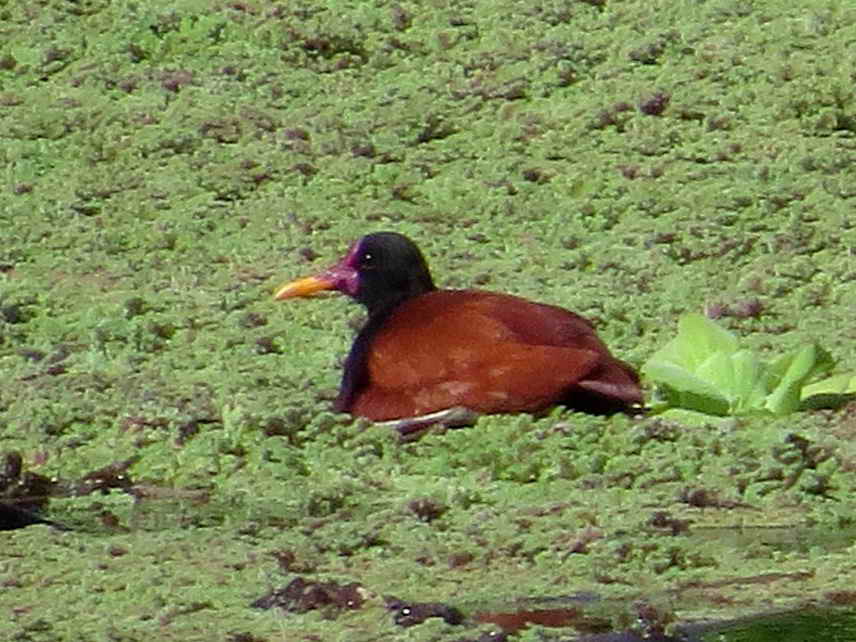Amelia's wattled jacanas - history of a nest
By the time Amelia discovers this nest there was another family relatively near this one. So, so as not to confuse these families these became Amelia's Jacanas. The nest was nearer the Lizard Path but cattails tampered the view. We had to observe the nest from the sidewalk. The story begins on 15th of February in this way
17-02-14 © Amelia Besana
Photos in video format
Amelia says "when I saw the jacana fighting, I first thought it was taking care of the chicks, but when I zoomed the image I realized there were eggs. First some Rose-billed Pochard juveniles came near and then a coot. The jacana got very nervous because the coot was getting too close. When all visitors moved away, the jacana calmed down, checked the eggs and settled to heat them
Amelia says "when I saw the jacana fighting, I first thought it was taking care of the chicks, but when I zoomed the image I realized there were eggs. First some Rose-billed Pochard juveniles came near and then a coot. The jacana got very nervous because the coot was getting too close. When all visitors moved away, the jacana calmed down, checked the eggs and settled to heat them
The four eggs are exposed and seem to be lying directly on the vegetal material with no added support underneath. This jacana, which so bravely defended the clutch and then sat on the eggs, is the father. In this species the female has a number of males, each in charge of a territory with enough resources to raise the chicks. The female mates with each of the males and takes care of the surveillance of the whole territory besides eating to recover the energy needed for a new egg-laying.
This relationship between one female and a number of males is called polyandry. Besides, in this case there is role reversal since it is the male which incubates and raise the chicks
This relationship between one female and a number of males is called polyandry. Besides, in this case there is role reversal since it is the male which incubates and raise the chicks
28-02-14 © Claudia y Tito Di Mauro
More tension with neighbours. On this occasion it was the turn of the common gallinule
"I could not check what had happened to the jacana eggs. I only saw an adult flying around the nest site. Only when I magnified the pictures did I find that at least three chicks had been born! The 4-egg nest discovered by Amelia had been successfull", tells us Carlos.
En las fotos superiores están las tres jacanitas del nido que detectó Amelia que ya tienen más de tres semanas. La jacanita de la foto izquierda es de la camada que nació a principios de febrero. Es decir que se llevan aproximadamente cuarenta días.




















